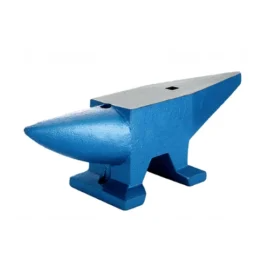A vice tool is one of the most essential components of any workshop, whether for woodworking, metal fabrication, or DIY repairs. Despite being a staple tool, improper use can lead to part damage, safety hazards, or reduced vice performance over time. As a global hand tools supplier, JCBL Hand Tools has seen firsthand how small mistakes can have a big impact on tool longevity and user safety.
In this post, we’ll walk you through five common mistakes to avoid when using a vice tool, especially a bench vice, and how to get the most out of this versatile equipment.
1. Over-Tightening the Workpiece
Many users mistakenly believe that cranking the handle tighter ensures a better grip. In reality, over-tightening can:
- Damage soft workpieces like wood or plastic
- Deform the jaws or threads of the vice
- Lead to faster wear on the spindle mechanism
Pro Tip: Tighten only until the workpiece is firmly held. If more grip is needed, consider using soft jaw covers or a larger vice.
2. Using the Vice as a Hammer or Anvil (Incorrectly)
Some heavy-duty bench vices come with an anvil area designed for light hammering. However, users often misuse this area for tasks it wasn’t intended for—like shaping hardened steel or striking with excessive force.
This can:
- Crack or dent the anvil surface
- Misalign the jaws
- Weaken the vice’s base over time
Correct Usage: Use the anvil section only for light-duty work. For heavier impact tasks, always use a standalone anvil.
3. Mounting the Vice Incorrectly
The way your vice is mounted significantly affects its stability and safety. A poorly installed vice may shift during use, causing errors or injuries.
Common mistakes include:
- Mounting too close to the edge of the bench
- Using undersized bolts or screws
- Installing on weak or thin surfaces
4. Neglecting Regular Maintenance
Like all hand tools, vice tools need basic care to function well over the long term. Skipping maintenance can lead to:
- Rust buildup
- Difficulty in opening/closing the jaws
- Loss of grip strength
Maintenance Tips:
- Clean after each use, especially after working with oily or dusty materials
- Apply lubricant to the spindle and slide regularly
- Keep it covered when not in use to avoid moisture and corrosion
5. Using the Wrong Type of Vice for the Task
There are multiple vice applications, and not every vice suits every job. For example:
- Using a metalworking vice for woodworking may damage delicate pieces
- Using a light-duty vice for heavy industrial work risks failure
Know Your Tool: Match your vice type (e.g., wood vice, pipe vice, engineer’s vice) to the task. Refer to a bench vice guide if you're unsure about suitability.
Final Thoughts
Avoiding these common mistakes not only protects your tools but also ensures better, safer results in your work. At JCBL Hand Tools, we take pride in offering a wide range of durable, globally supplied vice tools built to withstand tough conditions and varied applications.
Whether you're a professional tradesman or a hobbyist, working with the right tools—and using them correctly—makes all the difference.
Looking for a trusted Bench Vice Supplier?
Explore our global catalogue of vices and other hand tools designed for performance and durability.





Comments